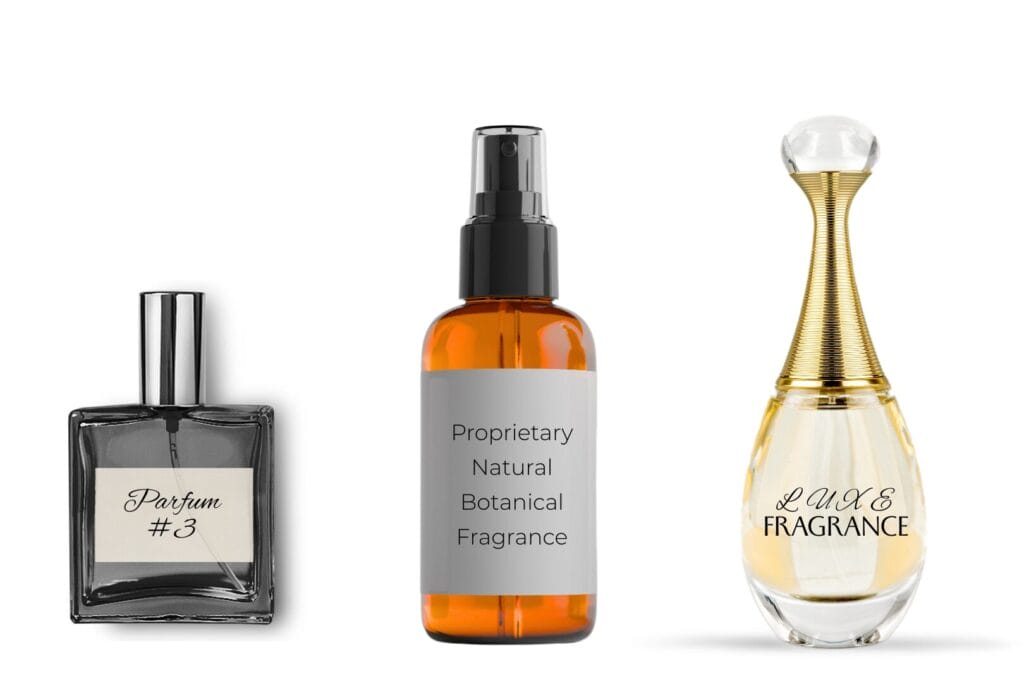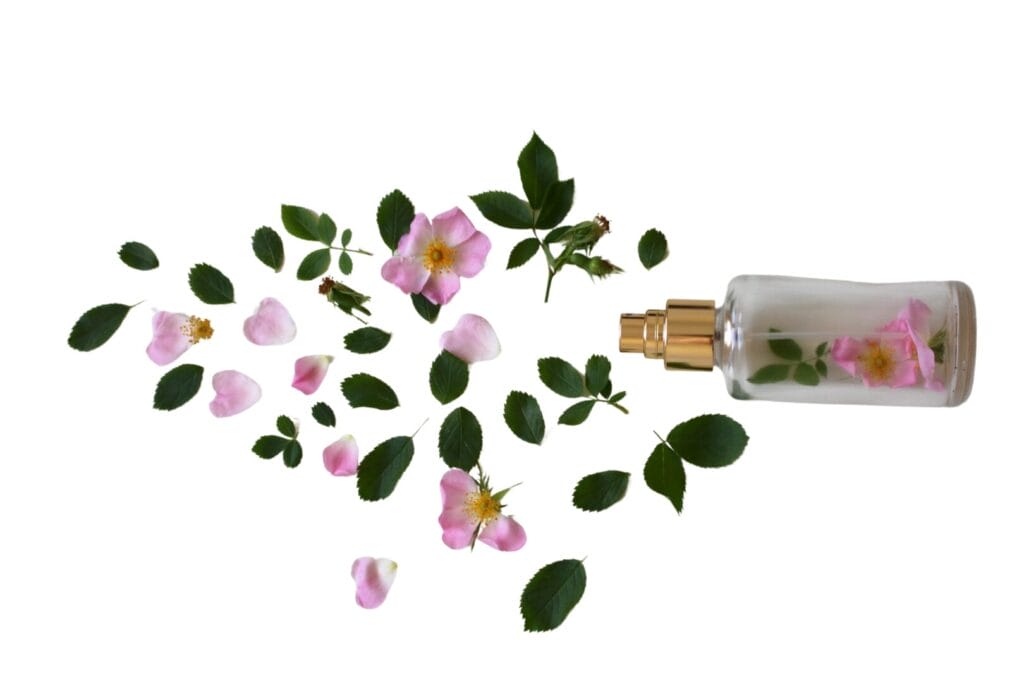
A Potent THC Deep Dive
Delta-9-tetrahydrocannabinol is called THC for short. THC is the main psychoactive compound that we are aware of in cannabis. However,
Before we dive into the nitty-gritty of natural and synthetic fragrances, consider this. Every fragrance in your skincare is either born from nature’s chemistry or manufactured in a lab. Natural fragrances carry centuries-old plant wisdom and therapeutic relations, while synthetics offer precision and novelty. Both have their place in luxury skincare, but understanding their origins helps you make an informed choice, not just based on aroma but on what you truly want adorning your skin and senses.

Natural fragrances are the essence of plants captured through time-honored methods like steam distillation and cold pressing. When you breathe in lavender, peppermint, or rosehip oil, you’re inhaling more than scent, you’re experiencing a rich molecular bouquet packed with therapeutic benefits. Modern research highlights lavender’s antimicrobial and anti-inflammatory activity, showing it supports wound healing and soothes irritated skin. Tea tree oil, long revered in holistic circles, demonstrates strong antibacterial and antifungal action against acne-causing microbes. Citrus oils and plant extracts like chamomile and calendula provide a gentle antioxidant embrace, aiding in redness reduction and barrier support.
Natural fragrance is more than a skin elixir. It’s a sensory wellness tool. Studies in the field of aromachology reveal that certain essential oils can elevate mood, enhance focus, and ease stress. On your vanity, these scents are multitaskers: they lend radiance to your skin while quietly contributing to emotional well-being. Still, they aren’t universally benign. Essential oils can trigger sensitivities in some, depending on concentration and skin type.

In luxury skincare, synthetic fragrances are analogs, recreations of natural scents or pure imaginative blends engineered in laboratories. These man-made molecules offer unmatched consistency in scent profile and longevity as well as inventive notes beyond botanical possibilities. However, they come with hidden complexity.
Synthetic fragrances often rely on petrochemical compounds such as phthalates, volatile organic compounds (VOCs), and synthetic musks, which may not appear on labels but have been linked to a range of health concerns. Scientific reviews cite synthetic fragrance chemicals as common instigators of allergic dermatitis, respiratory distress, headaches, and asthma. Alarmingly, ingredients such as phthalates and synthetic musks can act as endocrine disruptors, interfering with thyroid and reproductive hormones. Indoor air studies have tied these compounds to poor air quality, cognitive fatigue, and immune system implications.
In sum, synthetic fragrances excel in aesthetic control but demand careful scrutiny. Without full ingredient disclosure, you’re often inhaling or coating your skin with compounds that contribute more drama than elegance.

When you stand in front of a chic skincare display, it’s easy to be drawn in by sleek packaging or a promise of luxury fragrance. But decoding what’s actually inside takes a discerning eye. The first clue is transparency: phrases like “proprietary natural fragrance blend,” “100 % CO₂ extract,” and a full botanical name list, signal a commitment to natural plant-based scents. These labels aren’t just marketing, they’re a nod to purity and intentional formulation.
In the European Union, transparency in fragrance ingredients goes a step further. Under Regulation 1223/2009, companies must list 26 identified fragrance allergens when they exceed thresholds of 0.001 % in leave-on products or 0.01 % in rinse-off formulas. This isn’t just bureaucracy, it’s protection for consumers sensitive to botanical and synthetic irritants alike.
That said, vagueness remains a red flag. Terms like “parfum”, “aroma”, or simply “fragrance” can conceal hundreds, even thousands, of undisclosed chemicals. Without ingredient-level disclosure, you’re trusting labels at face value, which is no small ask when some mixes contain endocrine disruptors or undisclosed synthetic musks.
At the end of the day, your own experience matters most. Watch for tightness, redness, itchiness, or even central head sensations like headaches and give your skin space to respond. Sometimes the signs show up within days; other times, they emerge over weeks. Either way it’s your most honest signal in this scent-savvy era.

In elite skincare, luxury must mean more than velvet textures or ornate bottles, it’s an ethos, a holistic promise. That promise hinges on combining purposeful ingredients, responsible sourcing, and transparent communication.
When a luxury brand leans into natural fragrances, the result can be powerful: botanical blends chosen for their skin-nourishing profiles become immersive therapeutic rituals. It’s not just a sensory flourish but rather a deliberate choice to nurture inner calm and outer clarity.
This natural promise carries responsibility. Even plant-derived scents can cause irritation, especially if they’re not ethically sourced or rigorously evaluated for allergen content. That’s why true luxury brands rely on certified suppliers, and regulate essential-oil concentrations to maintain both efficacy and tolerance.
Most importantly, the hallmark of a luxury brand is transparency. When you choose a high-end product, you deserve to know exactly what’s in it or at least have confidence that the brand has vetted every ingredient. Proprietary blends are fine, and necessary for brand originality, but when they mask laden chemicals or leave fragrance choices unspoken, that’s where prestige falls away.

In the modern world of luxury skincare, fragrance itself isn’t inherently harmful—what truly matters is the source, purpose, and transparency behind it. Natural botanical scents often provide more than a pleasant aroma: when properly formulated and ethically sourced, they can offer natural fragrance skincare benefits from antioxidant protection to mood elevation. Clinical reviews consistently highlight the anti-inflammatory and antimicrobial potential of essential oils like tea tree, frankincense, and lavender in professional skincare formulas . However, these benefits should never come at the expense of skin safety, which demands rigorous quality control, ethical sourcing, and mindful dilution.
On the flip side, synthetic fragrances do offer cosmetic products reliable scent profiles and longevity. Yet this convenience often comes with synthetic fragrance allergens and hidden chemical burdens—phthalates, VOCs, synthetic musks—that have been linked to respiratory issues, endocrine disruption, neurological symptoms, and indoor air degradation . A study in environmental health confirmed that fragranced consumer products emit hundreds of VOCs, many at toxic levels, even when marketed as green or natural.
Ultimately, your skin and senses offer the best feedback. Redness, irritation, headaches, or breathing discomfort are often the first warning signs that a fragrance—whether natural or synthetic—is working against you. Regularly evaluate how products feel on and react with your skin, and pause use if symptoms appear.
Above all, choose brands that radiate integrity and prioritize both plant potency and consumer safety. That is the true intersection of science and luxury, where elegant scent rituals meet transparent skin-positive formulations.

Fragrance in skincare should be more than an indulgence. We believe it should enhance your daily ritual without compromise. When choosing a fragrance, your choices should align with brands offering transparency, evidence-based efficacy, and respect for both your skin and the environment. In doing so, you define luxury that is both deep and alluring. Luxury that feels elite, earthy, and entirely sincere.

Delta-9-tetrahydrocannabinol is called THC for short. THC is the main psychoactive compound that we are aware of in cannabis. However,

In today’s fast-paced world, even self-care has fallen victim to the checklist mentality. Serums applied in a rush, mindfulness squeezed

In the ever-evolving world of skincare, innovative treatments play a crucial role in maintaining healthy, youthful skin. As the seasons

In the world of skincare, we often focus on topical treatments and external factors. However, true beauty radiates from within,

Today’s market is saturated with beauty products. It seems there are several products for every part of our face and

Harry J Anslinger and William Randolph Hearst are two prolific individuals of the 1900s. William Randolph Hearst is the older
Disclaimer: The content on this site is for informational purposes only and is not intended as medical advice, diagnosis, or treatment. Statements and products have not been evaluated or approved by the FDA and are not intended to diagnose, treat, cure, or prevent any disease. You must be 21 years or older to make a purchase. Always consult a qualified healthcare professional before making health-related decisions.